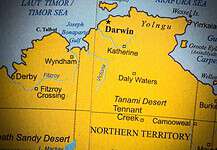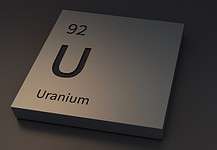Image: UNSW.
BY CAMERON DRUMMOND
SINCE its initial use in military applications, drone technology has evolved into a cost-saving and efficient tool for many industries, including mining.
Mining majors such as BHP already recognise the advantages of drone technology for a range of applications.
BMA mining production head Frans Knox said the use of drones at mine sites has made operations safer and more productive.
“At some of our coal mines in QLD, they’re used to ensure areas are clear before a blast takes place and to track fumes post-blast,” Mr Knox said.
“They’re also used to improve road safety on sites, by monitoring traffic, road conditions and hazards.
“At our Olympic Dam mine in South Australia, the maintenance team use them to help inspect overhead cranes, towers and roofs of tall buildings to avoid working at height.
“We’re also becoming more productive. We’ve been trialling drones fitted with military-grade cameras to provide real time aerial footage and 3D maps of our sites.
“This is far cheaper than using planes for survey work, and the savings at our sites in QLD alone are estimated to be $5m a year.
“With drones, we now gather more information about our sites than ever before.
“We can more quickly and accurately measure our stockpiles, review compliance to design against mine plans and understand where we need to make changes to improve safety or boost productivity.”

Image: UNSW.
Automated Drones
According to global consultancy firm McKinsey & Company, the rise of automation – including its use in drones – will increase productivity at mine sites by a whopping 25 per cent.
They could also cut health and safety costs as much as 20 per cent by reducing the number of workplace accidents.
Over the past decade, the growing use of robotic process automation has quietly taken root – with early adopters such as Boeing investing more than $1 billion in research and development.
It automates repetitive and often rules-based processes without the use of a human resource, and is an area of technological advancement that business leaders in mining are looking at to help maximise efficiencies and cut labour costs.
While most drone applications in the mining industry are currently performed with human input, companies – such as Isreali-based Airobotics – offer drone systems that do not require a pilot or an operator.
Airobotics founder Ran Krauss said his company’s vision was to develop a totally unmanned system capable of carrying out the same tasks as piloted drones.
“The system fully automates drone operations, and consists of three components: An airbase, a 2.1m high docking station equipped with a robotic arm for battery and payload swapping, the industrial-grade Optimus drone and the Airobotics cloud-based software,” Mr Krauss said.
Besides removing the need of a pilot, the utilisation of automated drones in the mining industry can offer a range of benefits.
Leading Australian drone researcher Dr Simit Raval from UNSW’s Mining Engineering department said that advances in drone technology had hit a price point and safety benefit for industries such as the mining sector.
“Basically, drone based observations in most of the cases are quicker and cheaper compared to airborne or in some cases ground based survey without compromising on the accuracy,” Dr Raval said.
Nowadays, drones can provide more frequent and accurate inspections of critical infrastructure such as pits, tailings dams and haul roads, and help prevent infrastructure failure and equipment damage by quickly identifying risks and the area of concerns.
Their use can also save on fuel and labour costs by removing the need for employees using ground-based vehicles to conduct inspections.
Drilling and blasting can become more efficient, with automated drones providing accurate drill-hole alignments, and therefore eliminating the excessive use of blast materials.
The mapping of the blast fragmentation sizes produced by accurate blasting as well as tracking of fumes dispersion is possible in-turn help reduce wear and tear on hauling and crushing equipment using drones.
“We flew drones over a coal stockpile at Glencore’s Ulan Coal mine for thermal imaging, and have also used drone mounted high resolution hyperspectral imaging at Russell Vale Colliery to ‘fingerprint’ the sensitive ecosystem over a longwall mining area at a very fine scale that is impractical by any other conventional methods of ecological surveys,” Dr Raval said.
“We have also designed a prototype drone-based water sample collection system and tested it successfully at the tailings dam of the Glendell coal mine.”
Drones can help with quick incident detection to minimise damage and clean-up costs, as well as environmental damage.
The ability to provide live video feeds means they can also be used for site security and help aid with response during emergency situations.
Dr Raval and his team are actively involved in developing drone-based “precision mine rehabilitation technologies” to aid speedy recovery of mined land.
Administration and management can also be made more efficient, using drones to make it faster and easier to track and locate equipment, manage contractors, and perform precise stockpile evaluations.
“We are in process of coupling virtual reality system with real-time drone feed, which in recent future would benefit active administration and management,” Dr Raval said.
Dr Raval is also currently leading an Australian Coal Association Research Program (ACARP) project that explores drone-based LiDAR system for characterising structural parameters of pit walls.
“In mining, my vision for a mine site is to have a number of drones making automated observations that feed into a smart system to predict areas of concern and mitigate against them,” Dr Raval said.
He also downplayed fears that employees in the mining industry would lose jobs to drone technology.
“It is highly unlikely for people to lose jobs over the use of drones,” Dr Raval said.
“In fact, increase in commercial use of drones is more likely to create new jobs.
“We all are experiencing a big evolution in terms of automation; if we believe in Darwin’s theory of evolution then this is the time to embrace and adopt these new gadgets in mining.
Current CASA regulations limits the use of fully autonomous drone systems at the moment, but that would soon change Dr Raval mused as the technology becomes more advanced and safer.
“I have no doubt that there will be drones everywhere in industry applications as the technology gets better and more reliable.”

LiDAR mapping by Data61’s Hovermap. Image: Data61.
Going Underground
While mining companies regularly fly drones to get aerial views of their facilities, taking them underground represents a much riskier use of the technology.
Recently blasted and low visibility cavities such as stopes can conceal hidden dangers, such as falling rocks, dampness or dust with the potential to incapacitate or destroy the expensive machines.
Another major challenge for a drone flying underground is that it isn’t able to use conventional satellite-navigation systems, such as GPS, like it could on the surface.
However the CSIRO, under its research unit Data61, is currently testing its Hovermap system – a payload that is attached to a drone that can be deployed to navigate large areas in underground mining operations.
Data 61 principal research scientist Dr Stefan Hrabar said that he and his team had already successfully carried out underground tests using Hovermap at Northern Star Resources’ Jundee and South32’s Cannington projects in WA, as well as Newcrest’s Cadia Valley mine in NSW.
“Hovermap consists of a LiDAR laser and on board computer with software connected to an autopilot system,” Dr Hrabar said.
LiDAR is a surveying method that measures distance to a target by illuminating that target with a pulsed laser light, and measuring the reflected pulses with a sensor.
“Hovermap is a combination of two different areas of research,” Dr Hrabar said.
“One part is drone autonomy – which we have been working on for more than 10 years – involving putting in sensors and intelligence to drones using cameras, lasers and radar so the drone can detect obstacles and follow different types of terrain without the need for expert pilot control.”
“In parallel we have been solving the problem of how to localise a robot in a new environment.
“This started with ground-based robots going into a brand new area it’s never seen and being able to build a map and figure out where it belongs within that map – a common problem in robotics.
“Our research developed a very robust way of implementing simultaneous localisation and mapping (SLAM) using only the data from a 3D LiDAR and a low-grade IMU, meaning the Hovermap payload can allow a drone to go into a brand new environment while moving around and mapping its surrounding area.
“SLAM is used to navigate in situations without using GPS, and post-flight we are able to use the same algorithms to produce a high resolution 3D model and correct for any drifts that may have been accumulated during flight.
“The by-product is that we are able produce this lovely looking map which you can analyse, manipulate and take measurements from – and we realised this can be very valuable in applications such as underground mining.”
Trials mapping underground stopes at Cannington and Jundee were well received by the mining companies.
“We tested the autonomous capability at South32’s Cannington underground mine, which showed the ability of the drone’s stability and collision avoidance systems while measuring the stope autonomously, which marked the world’s first autonomous drone flights underground,” Dr Hrabar said.
“Having the drone fly into a stope means you don’t have to have any people near the stope itself, which adds safety value to the operation, and for volumetric calculations it’s just way better – it removes the guesswork of the shadowing effects from current forms of stope measurement such as a cavity monitoring system (CMS).
“Because of the density and level of detail gathered by the Hovermap payload, miners can now understand the geotechnical side of things a lot better.
“The big difference of our test at Jundee was we flew beyond line-of-site of the operator, sending the drone into areas where it flew autonomously for nine minutes of flight without anyone being able to see it.
“This underground autonomous beyond line-of-sight flight was another world first.”
The Data61 team also tested Hovermap in a block cave environment at Newcrest’s Cadia Valley mine, where it successfully flew into the draw points of a block cave to see if it could map out any hangups that may have clogged up.
“It’s been eye opening to see so much demand for the application of systems like Hovermap for autonomous underground mapping using drones,” Dr Hrabar said.
“Our next test will be in Canada at Glencore’s Kidd Creek operation for further trials and demonstrations together with UAS Inc, our Canadian-based early adopter.”








































